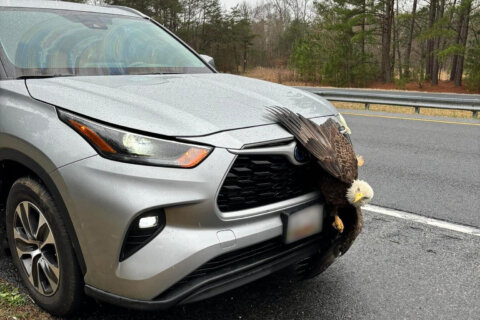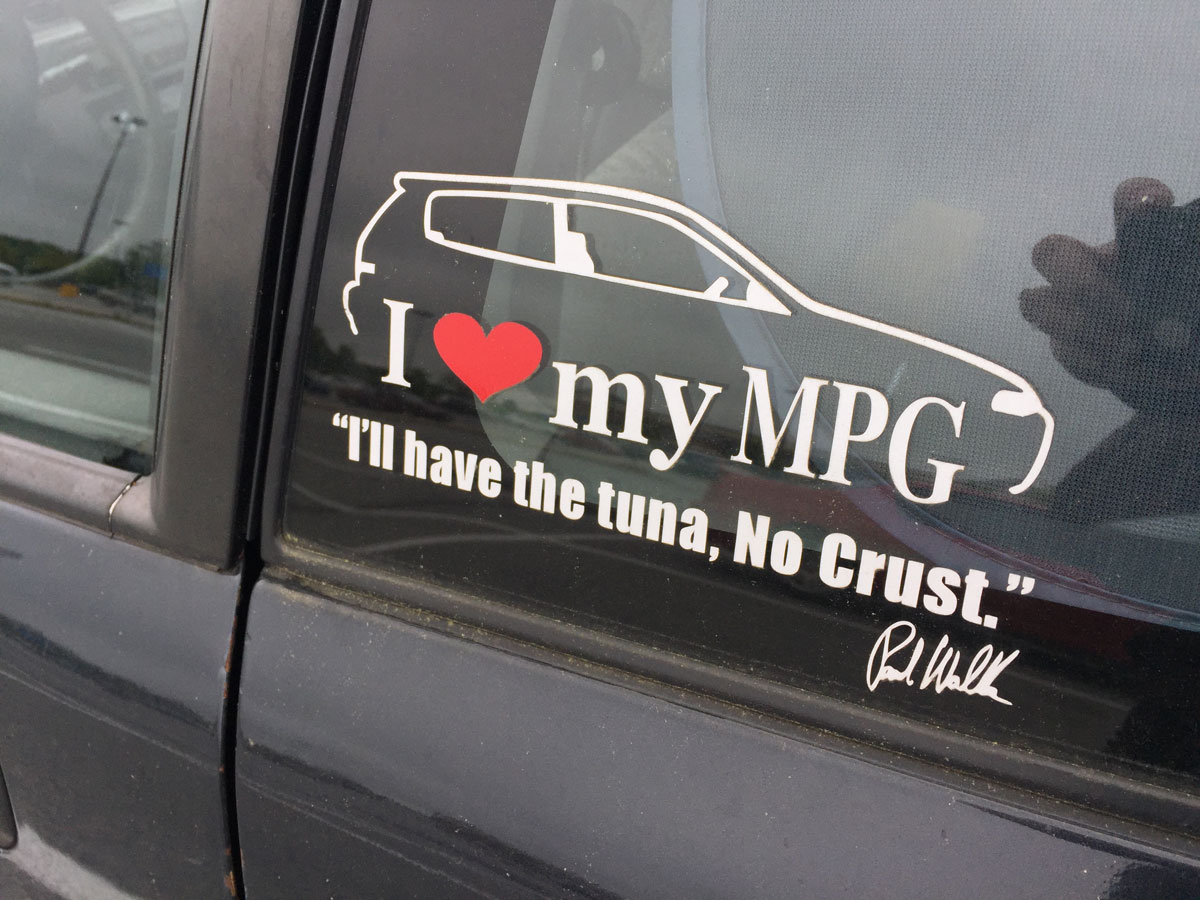

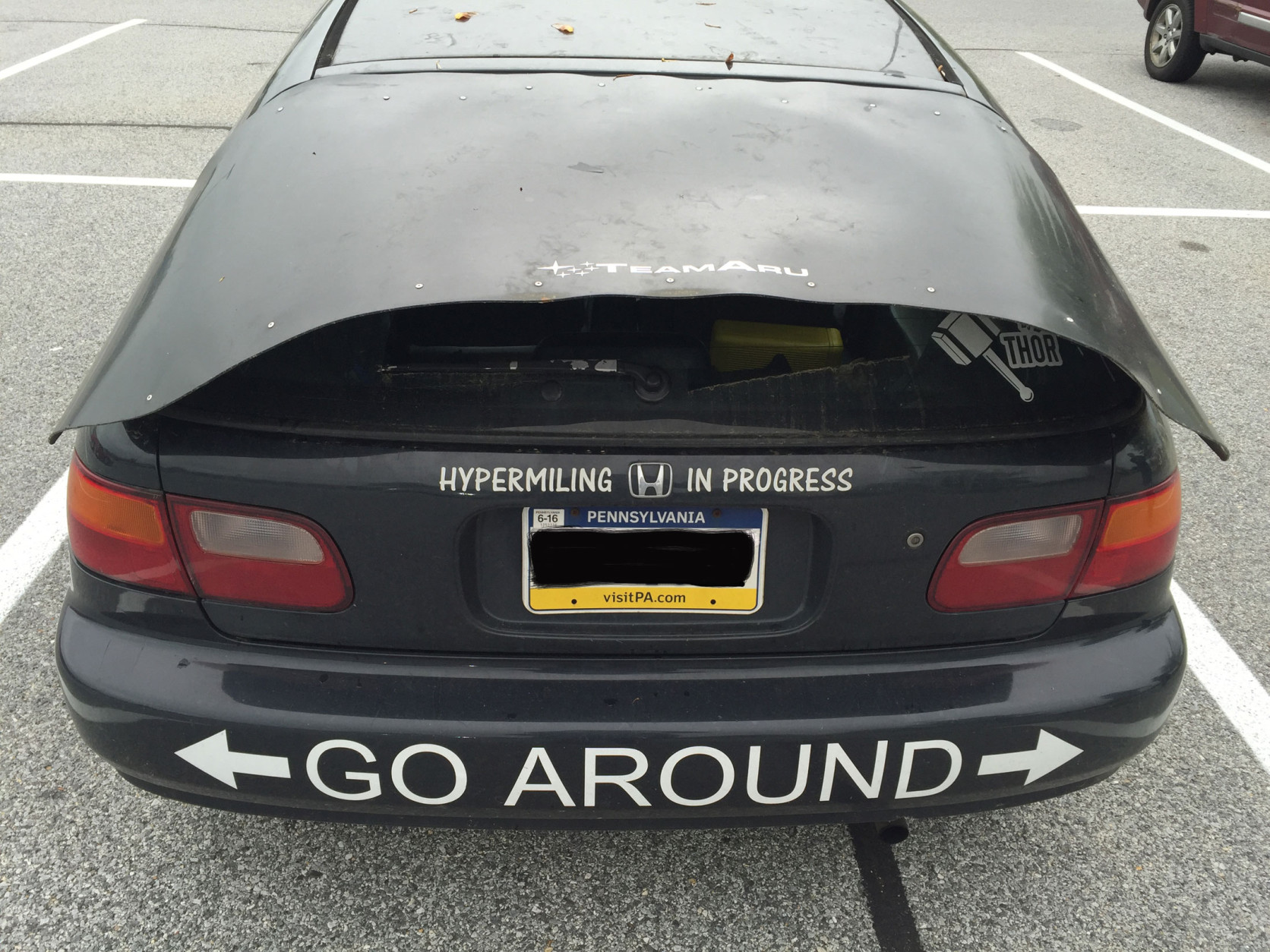

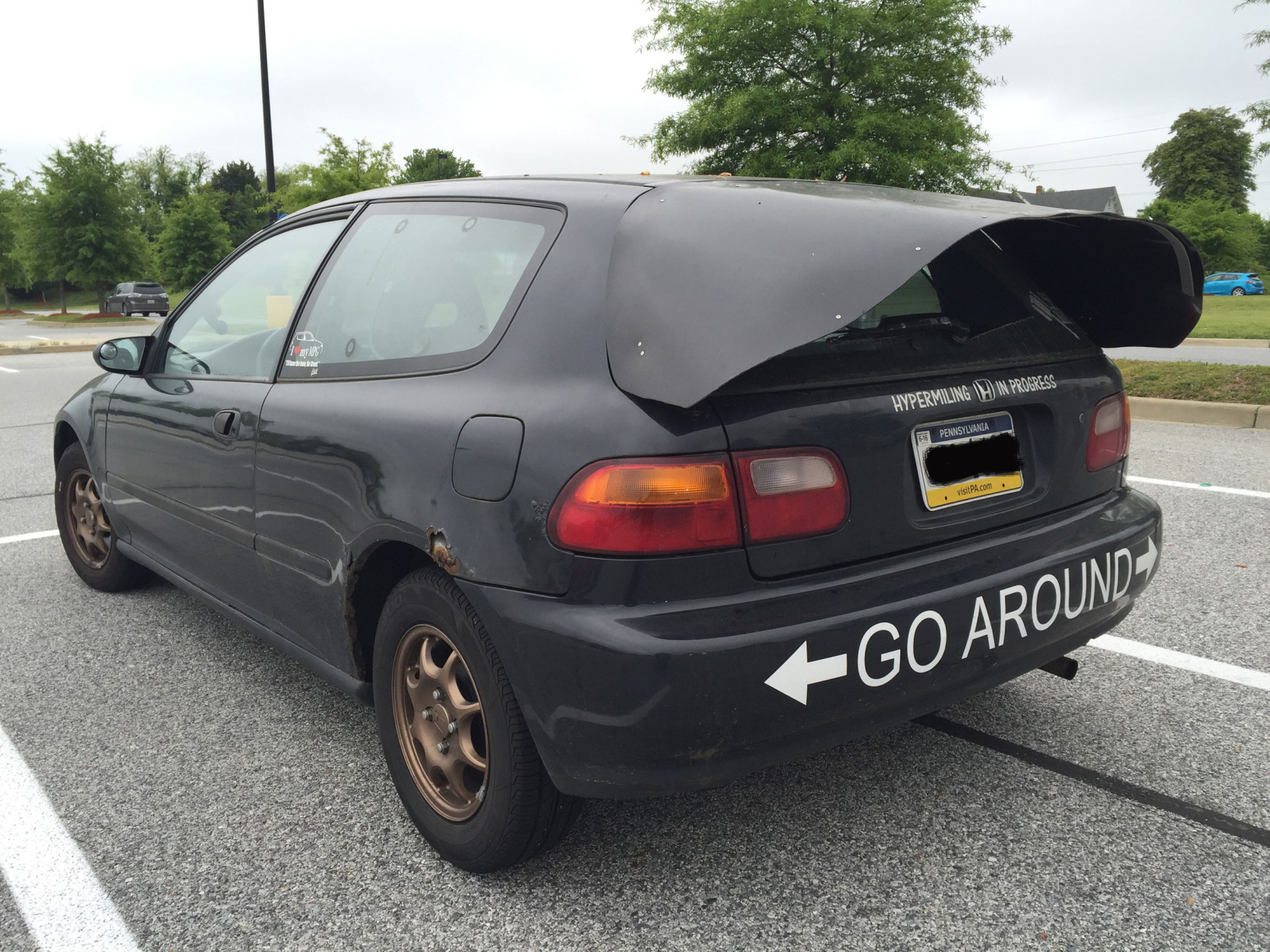


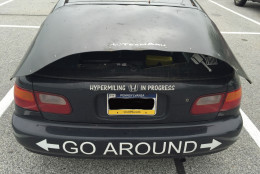


DUNKIRK, Md. — No offense, but Joe Cline’s car looks pretty strange.
“I’ve had people approach me in the city when I’m stopped at a red light … they want to ask me what the car’s about,” he said in an interview in a Dunkirk parking lot.
The black 1994 Honda Civic has what look like white teeth in the front and a funny-looking plastic wing or tail in the back.
“It really gets little kids excited. It’s pretty funny,” Cline said with a laugh.
And the car has a name: Dino. “Since it’s so old … it’s basically our dinosaur in our family,” he said.
Cline is a hypermiler, which means he tries to squeeze as many miles as he can out of every gallon of gas during his commute between Calvert County and the District.
The homemade plastic roof extension in back, called a kammback, looks a bit like a cape and is meant to reduce drag.
Cline, originally from Pennsylvania, also installed smaller-than-normal side mirrors for the same reason. And to reduce the weight of the car, he’s taken out the back seats.
Cline overinflates his tires, although that’s something AAA Mid-Atlantic advises against.
“The factory recommends 33 pounds at each corner, and I do 40,” he said.
Cline says the way you drive makes a difference too. For instance, speeding doesn’t help: “The higher you go, the more gas it takes to keep your vehicle at speed. Certain cars like certain ranges of miles per hour,” Cline said.
“My particular car does really well at 60. If I go 65, I start to reduce my miles per gallon, but if I go 55 I’m actually reducing too.”
If there’s a red light ahead, Cline slows down far in advance. “It actually makes more sense to slow down before you approach the light, so that when you get to the light it turns green and you’re already still rolling. That’s another thing that hypermilers do,” he said.
A message in big white letters on his rear bumper urges other drivers to “Go Around,” with arrows pointing left and right.
So are Cline’s changes really making a difference?
“[The] EPA estimate for this car when it was new was 38 miles to the gallon. I currently get 43 miles to the gallon every tank, and my best tank ever was 52 miles to the gallon,” he said.
He’s kept track of every single fill-up since September 2014, entering the information online at ecomodder.com.
The website estimates that during that time, Cline’s modifications and driving techniques have saved him a little over $150.
But the savings are much larger when you consider Cline used to drive a performance car that ran only on premium gas. He bought the Civic — which runs on regular unleaded gas — for $1,200.
“This car paid for itself in nine or 10 months. Now I’m in the green because I’ve been driving the car for three years,” Cline said.
“Even though it’s old, it’s still reliable — that’s part of the benefit of it. It’s also really, really inexpensive to maintain, which is great, because parts are plentiful and they’re cheap even when you have to buy them new.”
Consumer Reports tried out some of these hypermiling techniques and others, and you can read the results on their website.




